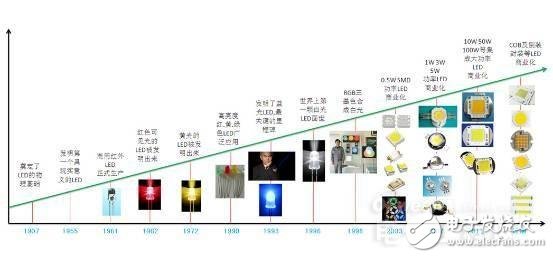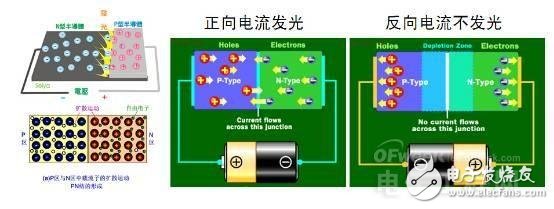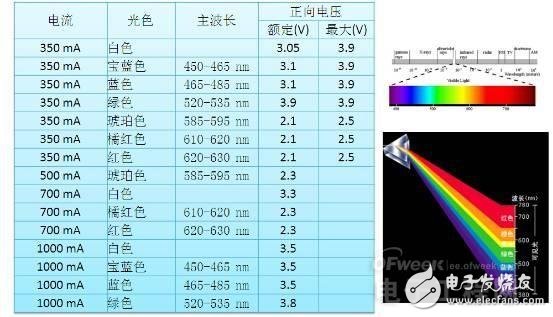At the beginning of its birth in 1962, LED was only a by-product of laser technology, but after years of polishing, it has become the king of the lighting industry.
Review history

In 1907, Henry Round, a scientist at the Marconi laboratory in the United Kingdom, first inferred that semiconductor PN junctions can emit light under certain conditions. This discovery laid the physical foundation for the invention of LEDs.
In 1927, Russian scientist Oleg Vladimirovich Losev independently produced the world's first LED. His research was published in scientific journals in Russia, Germany and the United Kingdom. Unfortunately, no one at the time. Take care of him.
In 1955, Rubin Braunstein, a 33-year-old physicist at RadioCorpora TIon of America, first discovered the infrared radiation of gallium arsenide (GaAs) and other semiconductor alloys and physically implemented it. The light emitted by the diode is unfortunately the light emitted is not visible light but infrared light, but this contribution is also great.
In 1961, Texas Instruments scientists (Bob Biard) and Gary Pittman discovered that gallium arsenide emits infrared radiation when electrons are applied. They led the generation of infrared LEDs for commercial use and obtained invention patents for gallium arsenide infrared diodes. Soon, infrared LEDs are widely used in sensing and optoelectronic devices.
In 1962, Nick Holonyak Jr., a 34-year-old general researcher at GE, invented an LED that emits red visible light, known as the "father of light-emitting diodes". Later Also won more than N awards. The LEDs at the time were only hand-made, and each sold for $10. In 1963, he left General Electric to serve as a professor at the University of Illinois, Department of Electrical Engineering at his alma mater, to train his successor.
In 1972, Helenak’s student, M. George Craford, invented the first orange-yellow LED in the footsteps of its predecessors, which is 10 times brighter than previous red LEDs. LEDs are the first step toward increasing luminous efficiency.
In the late 1970s, LEDs have appeared in red, orange, yellow, green, emerald and other colors, but there are still no blue and white LEDs. Because only the invention of blue LEDs is possible to achieve full-color LED display, the market value is huge, but also a worldwide problem at that time. Scientists have instead focused on improving the luminous efficiency of LEDs.
In the mid-1970s, when LEDs produced green, yellow, and orange light, the luminous efficacy was 1 lumen/watt. By the mid-1980s, the use of gallium arsenide and aluminum phosphide made the first generation of high-brightness red and yellow. The green light LED was born, and the luminous efficiency has reached 10 lumens/watt.
In 1993, during the inauguration of Nichia Corpora TIon, Nakamura used a semiconductor material, gallium nitride (GaN) and indium nitride (InGaN), to invent blue LEDs. The white light is synthesized by the RGB system, and the light efficiency and brightness of the LED are not high, and the LED cannot be used in the field of illumination. Therefore, in 1995, Nakamura repaired the use of indium nitride and invented the green LED. In 1998, the red, green and blue LEDs were used to make white LEDs. Since then, green and white LEDs have been successfully developed, marking the official entry of LED into the lighting. The field is the most critical milestone in the development of LED lighting. Nakamura Shuji is known as the "father of blue, green and white LEDs"
In 1996, the invention patent of the white LED that was first declared by Nichia Chemical Co., Ltd. in Japan was to apply YAG yellow phosphor on the blue LED chip. The blue light emitted by the chip and the yellow light emitted by the phosphor were complementary to form white light. The emergence of blue and white LEDs has broadened the field of application of LEDs, making applications such as full-color LED displays and LED lighting possible.
At the beginning of the 21st century, LEDs have been able to emit light of any visible spectrum (including infrared and ultraviolet). Its luminous efficiency has reached more than 100 lumens / watt.
Luminescence mechanism
The LED is taken from the abbreviation of the three words of Light EmitTIng Diode, which is translated into "Light Emitting Diode" in Chinese and has the characteristics of a diode. The heart of the LED is a semiconductor wafer. The wafer is mainly composed of a P-type semiconductor and an N-type semiconductor, and P-type and N-type semiconductors of different materials emit different colors of light under the action of a forward current.

pros and cons
First say the advantages
1. Energy saving, more than 80% energy saving than incandescent lamps, more than 50% energy saving than energy saving lamps
2. Small size, light weight, not afraid of vibration
3. High light efficiency, 8 times that of incandescent lamp 15m/w, more than 2 times that of fluorescent lamp 50 Lm/w
4. Light color can be selected, LED light source color and color temperature can be flexibly applied
5. Good directionality, LED illumination angle can be adjusted flexibly
6. Environmental protection: no harmful substances such as mercury contained in energy-saving lamps
7. The cold light source has no ultraviolet light and infrared rays, so there is no heat and no radiation.
8. Long life, life expectancy of 50,000-100,000 hours longer than traditional light source life of 10-50 times.
9. Fast response, nanosecond level.
1. Heat dissipation problem, another part of the LED energy is converted into heat during the electro-optic process. If it cannot be dissipated in time, the junction temperature of the PN junction will rise, accelerating the aging of the chip and the encapsulation resin, causing the chip to fail, affecting the LED. Service life and luminous performance
2. Poor waterproof performance, is an Achilles weak point source for outdoor use. Internal metal oxidation after internal water absorption affects output or generates internal stress, phosphor moisture absorption, light color drift
3. The cost is higher. light source. heat sink. power supply. High-through lampshade / lens / reflector. Four costs collectively push up LED costs
4. The driver needs to provide constant current power, and the life of the drive is an important factor affecting the life of the lamp.
5. Semiconductor devices, sensitive to the influence of static electricity, easily penetrated by PN junctions to cause leakage current or dead lights
Compared to traditional light sources

LED characteristics
LED operating voltage is generally between 2-3.9V. (LED voltage drop is different for different light colors): green -3.3-3.9V; blue, royal blue -3.1-3.9V; red, amber, orange, -2.1-2.5V. The operating current of the LED will fluctuate greatly with the change of the supply voltage, so the LED generally needs to work in the constant current driving state. The LED has a one-way pass characteristic (current can only flow from the positive pole of the diode and the negative pole flows out). The light output of the LED changes depending on the current input to it. The light output of an LED is deeply affected by its operating temperature.


Guangzhou Ehang Electronic Co., Ltd. , https://www.ehangmobile.com